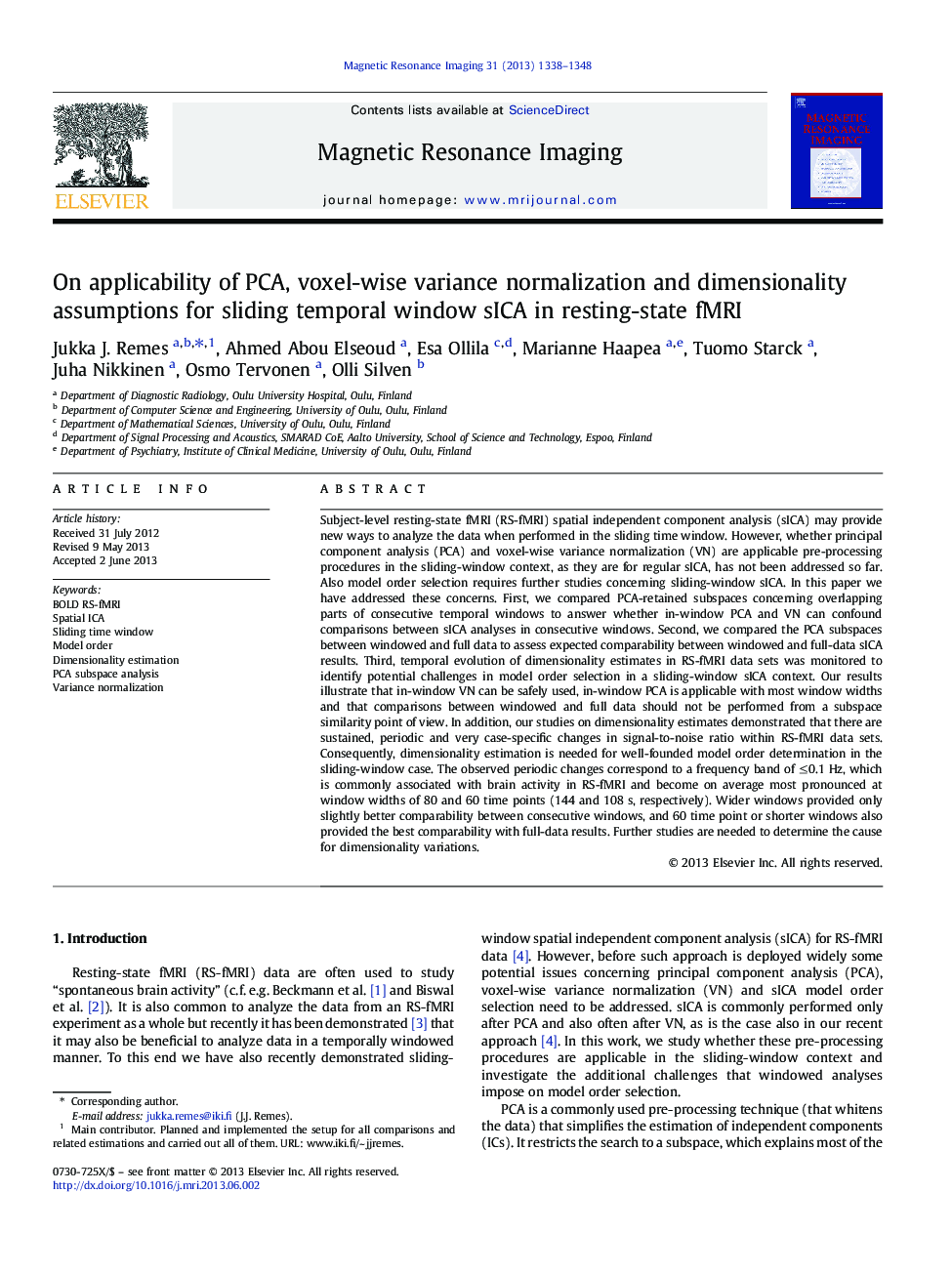| کد مقاله | کد نشریه | سال انتشار | مقاله انگلیسی | نسخه تمام متن |
|---|---|---|---|---|
| 1806372 | 1025203 | 2013 | 11 صفحه PDF | دانلود رایگان |

Subject-level resting-state fMRI (RS-fMRI) spatial independent component analysis (sICA) may provide new ways to analyze the data when performed in the sliding time window. However, whether principal component analysis (PCA) and voxel-wise variance normalization (VN) are applicable pre-processing procedures in the sliding-window context, as they are for regular sICA, has not been addressed so far. Also model order selection requires further studies concerning sliding-window sICA. In this paper we have addressed these concerns. First, we compared PCA-retained subspaces concerning overlapping parts of consecutive temporal windows to answer whether in-window PCA and VN can confound comparisons between sICA analyses in consecutive windows. Second, we compared the PCA subspaces between windowed and full data to assess expected comparability between windowed and full-data sICA results. Third, temporal evolution of dimensionality estimates in RS-fMRI data sets was monitored to identify potential challenges in model order selection in a sliding-window sICA context. Our results illustrate that in-window VN can be safely used, in-window PCA is applicable with most window widths and that comparisons between windowed and full data should not be performed from a subspace similarity point of view. In addition, our studies on dimensionality estimates demonstrated that there are sustained, periodic and very case-specific changes in signal-to-noise ratio within RS-fMRI data sets. Consequently, dimensionality estimation is needed for well-founded model order determination in the sliding-window case. The observed periodic changes correspond to a frequency band of ≤ 0.1 Hz, which is commonly associated with brain activity in RS-fMRI and become on average most pronounced at window widths of 80 and 60 time points (144 and 108 s, respectively). Wider windows provided only slightly better comparability between consecutive windows, and 60 time point or shorter windows also provided the best comparability with full-data results. Further studies are needed to determine the cause for dimensionality variations.
Journal: Magnetic Resonance Imaging - Volume 31, Issue 8, October 2013, Pages 1338–1348